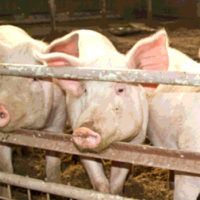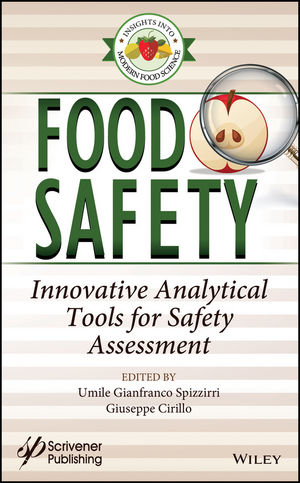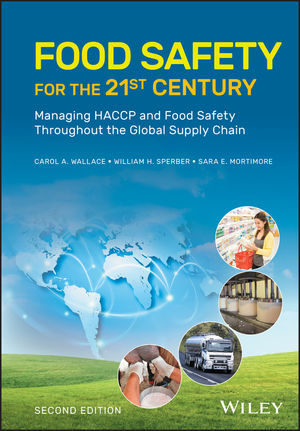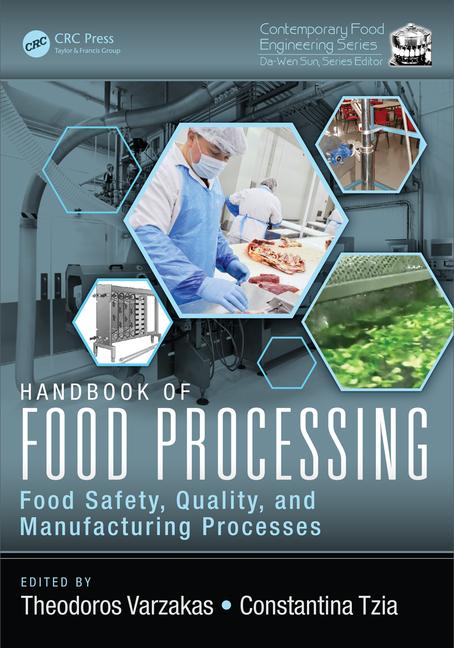Bear Creek has been making gift baskets with fresh fruit since the l930s, and while old-fashioned values drive its approach to quality and customer service, it takes a high-tech approach to assuring the safety of its products and maintaining its sanitation and GMP programs.
On Friday afternoons at Bear Creek Operations, long before the sanitation crew is due to report to work, a sanitation database starts silently generating the schedules for the coming week. The updated, custom tailored schedules go out to 43 operating units, and as each crew member completes his tasks, he logs any discrepancies, occurrences or out-of the ordinary conditions that might have caught his eye.
This information is stored on a database maintained by Bear Creek, parent company of Harry and David®, a Medford, OR-based manufacturer of gift baskets that got its start with pears and now includes a frill range of fruits, and chocolates and baked items. “We are building a solid history of test data on environmental conditions— even down to the drains—so that we know everything is clean.”
But a sanitary environment is just one safety consideration where fresh goods are prepared. So along with acting as a “live cleaning manual,” as Food Safety Manager Charlene Harwood, Ph.D., says, the database generates daily Good Manufacturing Practice (GMP) checklists. These cover items such as general plant conditions, pest activity and, the health and dress of personnel, which supervisors sign off on before the day's work commences. “It's like a pilot's checklist,” Harwood says.
The database is used to store information on the completion of GMP and pest control activities, as well, and will produce schedules of periodic activities not performed on a daily basis that are coming due, such as taking a sample or inspecting a particular piece of equipment. “The schedules and activities are personalized down to the work unit,” Harwood says. “Along with checking off daily activities, periodic schedules are dated and signed. There’s a place for comments, where infractions can be logged or explained, or why something was done. These exceptions are logged.”
In all, schedules are issued and data gathered from work groups encompassing all the company’s manufacturing and storage operations. “We can print summary reports each week to see what is overdue, and what problems might have come up,” Harwood says. “If patterns seem to be emerging, we can check the history of the activity and work on preventive measures. It stores information on cleaning procedures and chemicals used, so we can easily keep them up to date and make sure that they are appropriate.”
Fully up and running since last November, the database is housed on a sewer and accessible via the company’s intranet. It is just one component of Bear Creek’s food safety program, which also includes documented sanitation standard operating procedures (SSOPs), monthly GMP inspections, monthly environmental monitoring, a Hazard Analysis & Critical Control Points (HACCP) program with quarterly audits and annual review, semiannual mock recalls, and an aggressive vendor certification program. The database, however, is the common glue that tracks all of these elements and affords Harwood and her staff visibility over the entire safety effort.
“As food safety manager, I have lots of responsibility but little direct authority,” she says. “The database helps me see the entire operation. Before, each group had its own manuals and schedules, but they weren’t coordinated and their focus was on production. Now I can look at reports each week and get a comprehensive view of what everyone is doing and find areas where I can help. Plus, it’s made our safety and GMP procedures more consistent throughout the company. I’ve got a much better handle on my job.
Expanding Products and Suppliers
The job for Harwood and the 25-person quality assurance (QA) staff at Bear Creek is especially important given the types of products made and the nature of the business. Fresh produce always needs to be handled carefully because it is eaten fresh and quality can deteriorate rapidly otherwise. Further, as a mail order gift business, the company knows that even a single customer disappointment could preclude a second chance. “We’re selling gift food, so it should be especially wonderful to eat,” Harwood says. “The company’s commitment to quality has to be absolute. Our key concerns are the safety, freshness, value and appearance of our gifts, especially our food gifts, which are the mainstay of our business.”
The company began when two brothers, whose names, Harry and David, remain its primary brandname, took over operation of their family’s Bear Creek Orchard in 1914. Its Royal Riviera® Pears already enjoyed a worldwide reputation but export markets in Europe began drying up by the Great Depression of the early 1930s. It was then the brothers hit on the notion of offering their pears as Christmas gifts by mail. Bear Creek now ships more than eight million packages a year and operates more than 95 retail stores nationwide.
This growth has encompassed the use of many other fruits besides pears and the establishment of a processing area to bake cheesecakes, cookies and fruit cakes, and a confectionery where a variety of candies and chocolate truffles are made. “Some gift components are made by vendors, but we make the majority of what we sell,” Harwood says.
Though the company still grows its own pears and peaches, other fruits are sourced literally from around the world. Crackers and baking materials are also supplied by vendors. A vendor qualification program is in place to help assure a quality supply of raw materials. “Long-term relationships with our suppliers are important. We consider them to be our business partners,” Harwood says. “We take an educational approach with them. If we find something to be lacking we help them get to where they need to be. It’s almost always a cooperative situation.”
Vendor audits are conducted; their frequency and vigor are based on a number of factors, including the potential hazards inherent in the food, the time since the last audit, how the communication has been, and if there have been any indications that the supplier might need some help. An informational booklet is sent to all vendors “explaining the importance we place on food safety, and issues of concern to us.” Vendors are asked to complete a survey to help ascertain the status of their food safety programs.
“We require certificates of analysis (COAs) on some incoming materials and we do some verification testing,” Harwood says. “We run microbiological tests and do pesticide residue analysis on the fruit. We have a staff of quality inspectors that inspect lots to be sure they meet our specifications in terms of color, appearance, taste and shelf life—the things we consider key to the quality of what we’re buying.”
Storage and Sensory Testing
Chemical and microbiological analyses, including environmental swabs, are outsourced, with most of the quality testing conducted in house. This testing includes pressure measurements which are taken of the pears to determine harvest timing and quality in storage. Pears become sweeter and juicier as starch reserves convert to sugar. During this process, the pears also soften, so as the pressure drops they are closer to being ripe. In the processing area, pH measurements are taken of batter in process, and all of the bakery and candy products are run through metal detectors.
One product development team, called the technical services department, is part of the OA department. It is tasked with developing new products or recipes to be used as components in the company’s gifts, as well as evaluating recipe changes. This work typically includes pH measurement, water activity and shelf-life determinations along with sensory evaluation. “Sensory evaluation initially is done by a trained team, then is usually extended to a large group of volunteers in a regimented testing format,” Harwood says. A separate product development design uses the bakery, candy and fruit products to develop gift items.
In addition to these responsibilities, A also “serves as a resource on label legality and food safety for the entire corporation, including marketing, product design, loss prevention and customer service,” Harwood says. Technicians also monitor shelf life of product in storage to make sure that only product that is well within its best-used-by date is shipped. Fruit could be in and out of the facility from within a few days to up to six months; Harwood says, “about 80% of what we will ship for a Christmas season is in by the first of November.”
Temperature monitoring and control is critical for fresh produce and is effected by computer control at Bear Creek. Shelf life of ripened pears depends on storage and handling temperatures, as well as harvest factors, time of year and transportation. Pears kept at a constant 31-34°F could have months of shelf life. Pears typically are stored in cold areas to delay ripening and in warmer areas to promote ripening; temperature ranges essentially affect the respiration rate of the fruit. The ideal cold storage temperature is 31-34°F at 90-95% relative humidity (RH). Optimal temperature for ripening ranges from 60-70°F at 90% RH.
Storage and handling procedures are written and reviewed annually. “We’ve identified the proper storage conditions for various types of products, and verify these continually,” Harwood says.
Teaching Why Things Happen
Though computer control and thorough documentation are important components of a modem food safety program, Harwood knows that the key to success of any safety effort is the people who bring it to life in the plant. “I feel that all the components of our food safety program are essential, but if I had to pick the most important, I would say it is employee training,” she says. “All the systems provide the skeleton, but the people doing the work flesh it out. Without them, the rest is just words, things that look good on paper.”
Individual production groups are responsible for devising and keeping track of their training regimens. The company uses dedicated sanitation crews in the manufacturing and warehousing areas, and production people also are responsible for cleaning their own areas and equipment. Harwood works with the various groups to develop food safety components for them to use with new employees and seasonal rehires. Additionally, Harwood prepares a 15-20 minute presentation each month on a variety of food safety topics, which have included Listeria, spiders, rodents and Mad Cow disease. The presentations are made available to all employees, but different groups will offer suggestions for topics suited to their specific needs. “People obviously think food safety is important,” she says. “They really pay attention at presentations and ask some probing questions.
“It’s not very hard to get people to buy in to the idea that food safety and quality are everyone’s responsibility,” she says. “We all eat; our employees know the food we make here goes to people’s tables. They know the success of the company depends on how they well they do their jobs. The way I empower them is to provide them with knowledge about food safety.” This means educating them about why things happen, how they happen and what they can personally do to prevent them from happening. “If people understand why they are doing something, then they are motivated to do the right thing.”
In addition to receiving training, employees must be supported when they identify a potential problem. At companies such as Bear Creek, where everyone is committed to the quality and safety of its products, people are encouraged to contribute their ideas on how to do things better. It is essential that they see everyone adhering to what we say our procedures are and to following up on any concerns they voice. This investment in the employee fosters pride. “Our people are proud of the quality of products that are produced, proud of the care that is taken to do things tight, and proud of themselves.”
Bruce Flickinger is a freelance writer and editor specializing in the food and pharmaceutical sciences. He can be contacted via e-mail at bruce@damarcom.com.
Bear Creek Safety Database Bears Fruit






